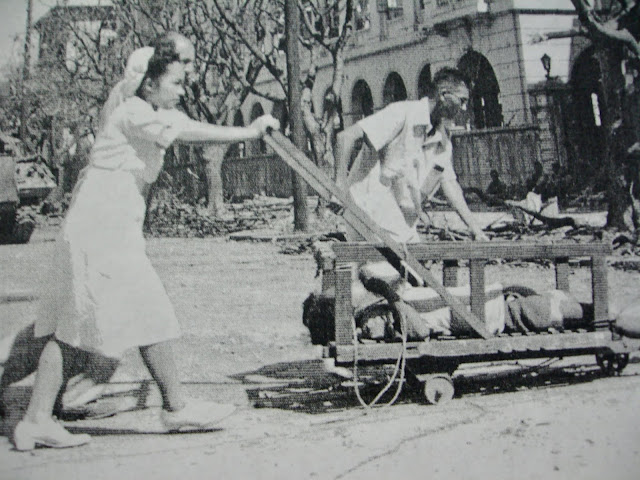The Battle of Manila, from February 3 to March 3, 1945, was the bloodiest month of the war. The Japanese soldiers knew that they would not get out of the battle alive and would not be able to return home. The Japanese soldiers took their anger out on the hapless citizens of Manila and involved them. The Japanese soldiers burned buildings and blew up every bridge crossing. The Japanese soldiers went into a frenzy of rape and murder against the citizens of Manila. By the end of the Battle of Manila, most of Manila was in ruins. About 100,000 Manila civilians were killed in the battle.
As American and Filipino guerrilla forces liberated towns in Manila from the Japanese, Japanese soldiers in other towns saw all Filipinos as enemy spies and committed more massacres and atrocities. In Batanes, the Japanese soldiers massacred and massacred the Yvatans to counter the powerful guerrilla campaign. Other mass abuses and massacres also occurred in several towns in Batangas. Mass abuses and genocide also occurred in Lipa, Tar, Bauan, Tanauan, Calauan, etc. In Laguna, there was also mass abuse and genocide in Calamba's Bay. And in Tayabas, there were mass abuses and quantitative massacres of civilians in Tiaon and Infanta. Towns were burned, civilians were shot and machine-gunned, and women were raped.
While the Japanese continued to slaughter, the Philippine military guerrilla forces fought back and forced revenge whenever possible. Fearing brutal treatment by the Japanese soldiers, those who surrendered were asked to submit to the American forces. Some of these Japanese soldiers knew why the guerrillas reacted the way they did. Other Japanese soldiers tried to forget the atrocities they had committed.
Equally tragic, American bombers indiscriminately bombed Baguio, sweeping away civilians as well, despite reports by Philippine military guerrilla units that Japanese soldiers had abandoned the city. The U.S. forces repeatedly carried out indiscriminate aerial bombardments in the cities of Cavite, Iloilo, Cebu, and Zamboanga. In addition to aiding the American troops, the Filipino military guerrillas also fought in their own vendetta.
At dusk on February 3, 1945, American troops invaded Manila with the support of Philippine military guerrilla units. Japanese troops arrived at the University of Santo Tomas, where Allied civilians had been housed since the beginning of the occupation. Sporadic machine gun fire stopped other vehicles that attempted to invade further. Japanese troops in Manila countered, marking the beginning of a bloody month-long battle. In terms of casualties, some 12,000 Japanese soldiers were killed in action, representing about 84% of the approximately 14,300 Japanese soldiers. About 1,010 American and Filipino guerrilla troops were killed in action, and about 5,500 were wounded. About 100,000 Philippine civilians, equivalent to about 7.7 times the number of casualties of both armies, were killed in the war.

